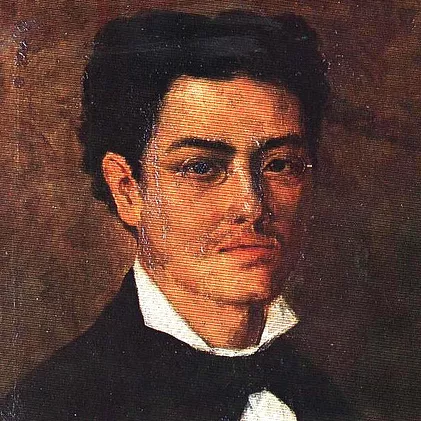Today in Philippine History, June 30, 1856, Manuel Luna was born in Badoc, Ilocos Norte
On June 30, 1856, Manuel Luna y Novicio, a violin virtuoso and conductor was born in Badoc, Ilocos Norte to Joaquin Luna and Laureana Novicio.
Manuel was brought to Manila at the age of five and began his early studies at the Ateneo Municipal. Later, he transferred to the Spanish Nautical School where he, being a brilliant student, completed his course in 1877 with first honors. Ambitious as he was, Manuel studied violin in his leisure hours with a teacher known only as Nicacio and, consequently, under the Spanish music teacher, Professor Remifio Calahorra. Not satisfied with the training he had received from them, and to further his artistic education, he decided to go to Europe.

|
|
| (Manuel Luna, a painting by Juan Luna) |
He sailed for Spain, where he enrolled at the Conservatory of Madrid. He was admitted as a member of the fourth-year class because of his previous training. He garnered many diplomas from the Conservatory, the most precious of which was that of “Professor de Violino”, signed by its director, Emilio Arrieta. Jesus Monasterio, the most celebrated man of Spain in the field of music was Luna’s music professor as well as admirer of his brilliant execution.
Toward the end of 1879, he sailed back for the Philippines. He became a member of the Liceo Cientifico Artistico-Literario. He performed in one of its selected concerts at the Variedades Theater on December 22, 1879, a benefit affair for the Spanish provinces of Alicante, Murcia, and Almeria. With Luis Vicente Arche at the piano, he executed a work of De Beriot, entitled “Scena di Balleto”, on the violin. One of the Manila papers said of his performance: “Mr. Luna played with brilliancy, delicacy, sentiment and purity of intonation, thus giving honor to Monasterio, his former professor.”
As conductor, Luna was among the best during his time. He had handled with aplomb big choruses and full orchestras that rendered masses written by famous composers. His real genius as baton wielder was seen in the morning of January 8, 1881, when he led a grand chorus of about 80 voices with members of the orchestra of the Manila Cathedral, Gruet, and the Famous Artillery Band. On that day, the fine church of the Recoletos was once more inaugurated, and the celebrated mass of Niedermeyer of which the “Gloria” and the “Credo” were the climax – was splendidly sung. Luna’s participation in the rousing, if solemn, performance was proof of his dexterity and self-assurance as conductor.
The last concert he appeared in while in Manila was the one patronized by Arche in honor of the latter’s departure for Spain. It was held at the Variedades Theater on the evening of February 3, 1882. About 60 musicians composed the orchestra under Arche’s direction. The program was made up of three selected parts. With Coppa at the piano, Luna executed the “Souvenir de Merique”. El Comercio said of his rendition: “Mr. Luna has the heart of a true musician for he feels what he plays ... if his enthusiasm does not decline and if he studies as true artists do, he will occupy a distinguished place in his career”.
He did not stay long in Manila. Since he intended to visit Europe once more, he went to Agoo, La Union, to bid farewell to his parents. Unfortunately, on July 15, 1883, he died – a victim of an acute disease – and was buried immediately.
He had brothers who also had distinguished careers: Juan Luna, was a celebrated painter; Jose Luna, a famous doctor and an excellent surgeon; Joaquin Luna, was an amiable senator. (The violin he used in his concert, a J.B. Vieullaume (1799-1875), was left in the possession of Joaquin.); and Antonio Luna, General of Filipino Revolutionary Army. He also had one sister, named Numeriana, who became the wife of Urbano Ramirez. She was a noted pianist.
References (via the Philippine National Historical Commission)
- Aguilar-Cruz, E. Luna. Manila: Department of Public Information, 1975.
- Manuel, E. Arsenio. Dictionary of Philippine Biography Volume 1. Quezon City: Filipiniana Publications, 1955.
- Dictionary of Philippine Biography Volume 2. Quezon City: Filipiniana Publications, 1955.
- Villanueva, Hector K. Eminent Filipinos. Manila: National Historical Commission, 1965.

No comments:
Post a Comment